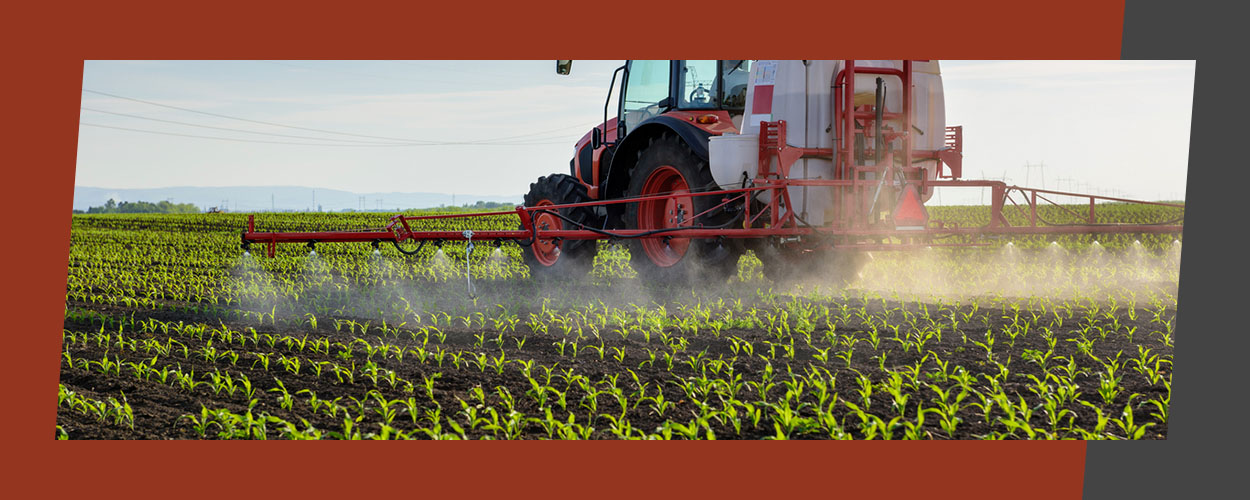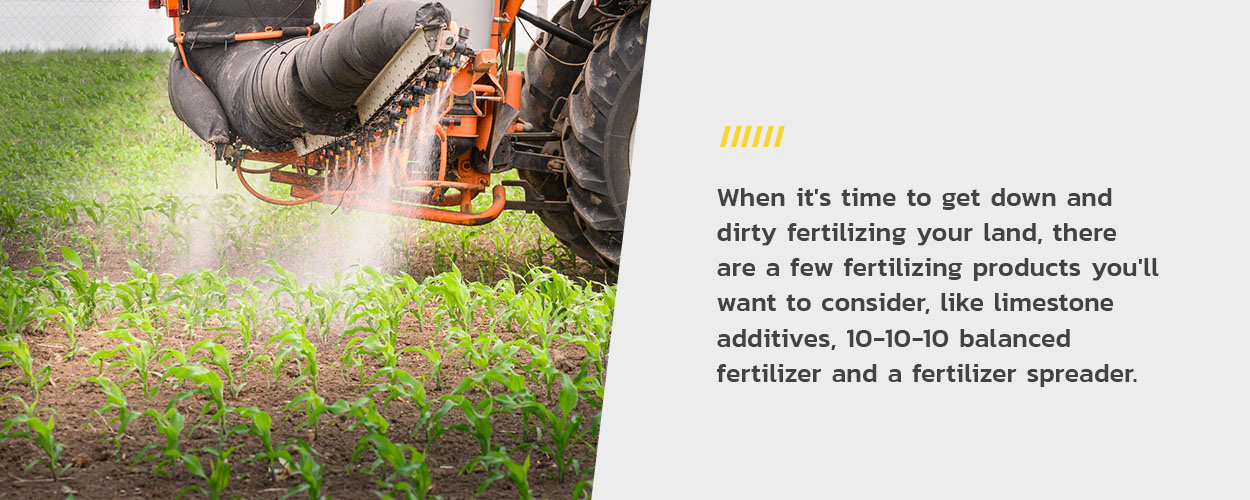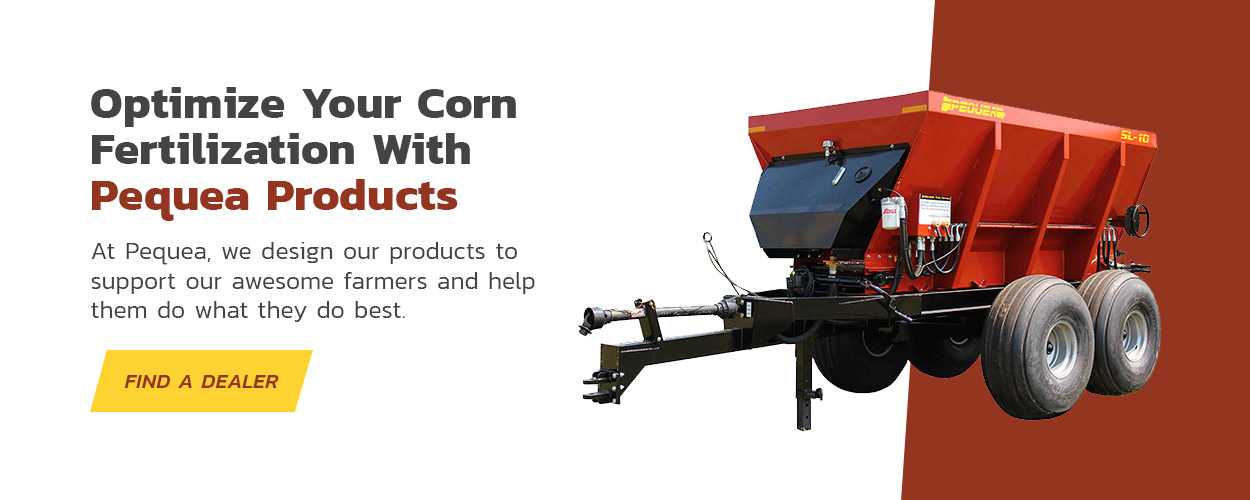How to Properly Fertilize Corn

So, you're looking to maximize your corn yield potential, but you're not quite sure how to achieve it. Lucky for you, we've compiled all the need-to-know information on corn fertilization to help you this growing season.
Starter fertilizer provides many benefits, so it's important to know how to incorporate it into your farming practices properly. Some of these benefits include nutrient use efficiency, improved corn early-season uptake, increased early-season plant growth and height, decreased silk time, lower grain moisture content and crop growth despite cool or moist conditions.
Learn more about how different nutrient deficiencies can lead to poor soil fertility, how you can properly test your soil and the various fertilization products you should have on hand below.
Soil Fertility
Just like any crop, soil fertility is a crucial factor in proper corn production. Improper soil pH, nutrient deficiencies and toxicities can all lead to lower corn yields. Ideally, soil intended for corn production should range from level 6 to 7.
Soil with a pH of 5.5 or lower can lead to a variety of problems in fertilizing corn, including:
- Increased aluminum and manganese levels that may stunt growth or kill the plant.
- Decreased availability of nitrogen, sulfur, phosphorus, potassium, calcium and magnesium.
- Limited root growth.
- Insufficient activity from necessary soil microorganisms.
How to Test Your Soil's Fertility
Since low pH can lead to such impactful consequences, you should test your soil's pH so you can address any fertility issues before you begin growing corn. While you should check your soil's pH at least every three years, it wouldn't hurt to run more frequent tests if you can. If you have a yearly rotation of corn, it may be more beneficial to test your soil yearly to verify you have adequate soil fertility.
Testing your soil isn't as easy as grabbing a bit of dirt and sending it off to the lab — OK, it kind of is — but there are some steps you need to take to ensure you collect a quality soil sample:
- Tools: Always use the proper collection tools when taking a soil sample. Augers and soil probes are recommended for the best quality sample, but a spade and clean buckets can also do the trick.
- Location: You'll want to grab a variety of samples from different parts of your land. Take samples of upland and bottomland soil, light and dark-colored soil and soil with unique or varying textures. This will give you a full picture of your soil's health, and not just the soil for one small, specific area.
- Technique: Use a soil map to identify and collect varying soil samples from around your property. Typically, you should aim to make your sample 4 to 6 inches in depth, depending on the type of land.
The Importance of Nitrogen
Corn plants are known to be greedy for nitrogen. Corn typically needs more nitrogen than the air and soil can give. Without supplemental nitrogen, your successful corn yield dreams will be crushed.
Corn plants suffering from a nitrogen deficiency will make this problem known in a few ways:
- These plants will take on a pale, yellowish-green look.
- You may notice a yellow inverted V-shaped pattern developing on the tips of older or lower leaves.
- The corn plant leaves will begin to die in that same inverted-V pattern.
Luckily, this can be avoided with proper nitrogen management. Around 1 pound of nitrogen is needed per expected bushel yield. This can change, depending on the land's location. Nitrogen moves fairly quickly in moist and humid climates. This means some farmland, specifically those with drier, lighter and sandier soil, may be able to use less nitrogen.
Proper soil sampling can help you determine the correct levels for your own farmland.
Causes of Low Nitrogen Levels
Significant amounts of nitrogen loss can continue throughout the growing season, so it's important to add nitrogen supplements at various points of the season routinely. If nitrogen is added all at once, your soil will start off strong but eventually lose considerable amounts of nitrogen throughout the growing process — leaving you with corn yield loss.
Nitrogen levels can decrease for a few different reasons, including:
- Denitrification: Denitrification occurs in soil with water-logged anaerobic conditions due to poorly drained soil or areas that experience excessive rainfall.
- Leaching: Leaching is most common in soils with low cation exchange capacity (CEC). These soils also tend to have a sandy texture and experience high rainfall.
- Runoff: Another cause of nitrogen loss is runoff, where nitrogen and other nutrients are physically carried away by excess water draining into waterways.
- Volatilization: This type of nitrogen loss typically occurs in hot and humid climates and in soils with a pH higher than 7.
Since a lot of nitrogen loss comes from excessive rainfall and moisture, it's crucial to have well-draining soil. In fact, well-drained soil is a crucial corn-growing condition for maximum growth and yield.

Applying the Fertilizer
The results of your soil test will help you determine how to fertilize your soil properly. When it's time to get down and dirty fertilizing your land, there are a few fertilizing products you'll want to consider, like limestone additives, 10-10-10 balanced fertilizer and a fertilizer spreader.
Limestone
Your test may reveal you need to apply limestone — also called lime — to the soil to neutralize the soil's acidity. You should apply lime during the fall so your soil has time to neutralize before the growing season completely. If things get busy and you can't apply lime in the fall, you can still add it in the spring. You won't get all the benefits of fall liming, but some benefits are better than none at all.
For the best results, invest in high-quality lime. How finely lime is ground and the purity of the material can all impact how effective your liming efforts will be. Most lime vendors are required to provide relative neutralizing value (RNV) data to potential buyers, but this can vary by state law. Being able to identify quality lime products can make a huge difference in your crop yield.
10-10-10 Balanced Fertilizer
An all-purpose fertilizer known as 10-10-10 is a common fertilizing option. 10-10-10 refers to the equal amounts of nitrogen, phosphorus and potassium included in the fertilizer. These three nutrients are vital to plant growth and survival, which makes 10-10-10 fertilizer an easy and popular choice.
This fertilizer should be added to soil at a depth of 3 to 4 inches. Typically, you'll want to use around 2 to 3 pounds of fertilizer per 100 square feet. However, sandy soils may need more fertilizer to help keep the soil moisturized.
Fertilizer Spreaders
Time is quite literally money, so optimizing processes like fertilization is extremely beneficial. Pequea fertilizer spreaders can efficiently distribute manure, lime and fertilizer, among other products. Specifically, Pequea's SF5 Fertilizer Spreader gives you coverage up to 20 feet wide with adjustable settings to let you drop material at the width and rate best suited for your needs.
Optimize Your Corn Fertilization With Pequea Products
Your corn isn't going to fertilize itself — to get a great corn yield at harvest time, you need to get serious about your fertilization efforts. At Pequea, we design our products to support our awesome farmers and help them do what they do best.
Are you ready to up your farming game? Check out our collection of fertilizer spreaders online today and find a Pequea dealer near you.
